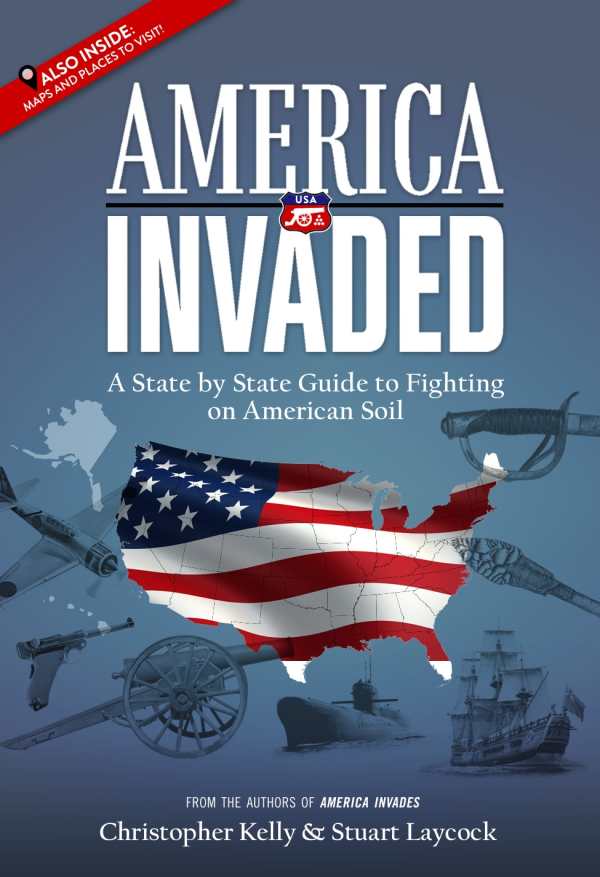America Invaded
A State by State Guide to Fighting on American Soil
America Invaded is a fun jumping-off point for discussions about history.
America Invaded by Christopher Kelly and Stuart Laycock offers an intriguing tour of past conflicts waged on American soil, from the Atlantic to the Pacific.
Arranged alphabetically by state, the book is easy to browse and easy to enjoy. Each conflict is introduced with background information that puts events in context. While some parts of the country—especially those involved both in the Revolution and the Civil War—can lay claim to more battles than others, the text does a fair job of giving equal attention to each state, no matter its size or the bounty of its history.
The difficulty of delivering an account that is simultaneously correct, relevant, and comprehensive for all fifty states sometimes shows, as when major battles are covered in a few paragraphs and small ones are expanded for the sake of balance. Compressing a lot of facts into a few paragraphs, as in the case of Southern states that saw many decisive Civil War battles, can give the text a rushed feel, but the authors occasionally pause to insert passages from original sources, such as Ulysses S. Grant’s memoirs or lines from Custer’s last message from the Battle of the Little Bighorn.
The advantage of the book’s broad reach is that it shines a light on small incidents that are shoveled aside in many books. Contrary to the supposition that American soil was never touched during the World War II, America Invaded chronicles a number of German U-boats that were sighted or sunk off the east coast as well as the Gulf coast. An even lesser-known assault came from the Japanese, who launched innumerable balloon bombs that were to land in North America and set fire to the forests of Canada and the Pacific Northwest. Years later, unexploded bombs were still being found as far east as the Mississippi River.
The writing style is somewhat uneven, at times reading like a series of encyclopedia entries, at other times infused with adjectives or veering away from hard history to discuss films and books set in various locales. The sudden switch to first person narrative when one of the authors introduces ancestors who were present at certain events in New York state history can be jarring, and might have been better placed in the introduction
The title and focus of the book raise an inevitable question: was America truly “invaded”? The term invader seems sometimes to be applied seriously and at other times not. Because the book does not define its terms or draw a clear distinction, the point of view can shift arbitrarily and create confusion, especially in conflicts between opposing groups of Americans, all of whom have equal claims and rights.
Maps, where included, are excellent, with an appealing, easy-to-read graphic style and historical sites—such as forts and battles—clearly marked. A two-page bibliography of suggested reading is also included, and a good guide for those who want to broaden their knowledge of events covered in the book. A timeline would have been an enormous help in tying events together, and an index would have been helpful in tracking characters that appear in more than one state.
America Invaded is a fun jumping-off point for discussions about history.
Reviewed by
Susan Waggoner
Disclosure: This article is not an endorsement, but a review. The publisher of this book provided free copies of the book and paid a small fee to have their book reviewed by a professional reviewer. Foreword Reviews and Clarion Reviews make no guarantee that the publisher will receive a positive review. Foreword Magazine, Inc. is disclosing this in accordance with the Federal Trade Commission’s 16 CFR, Part 255.

